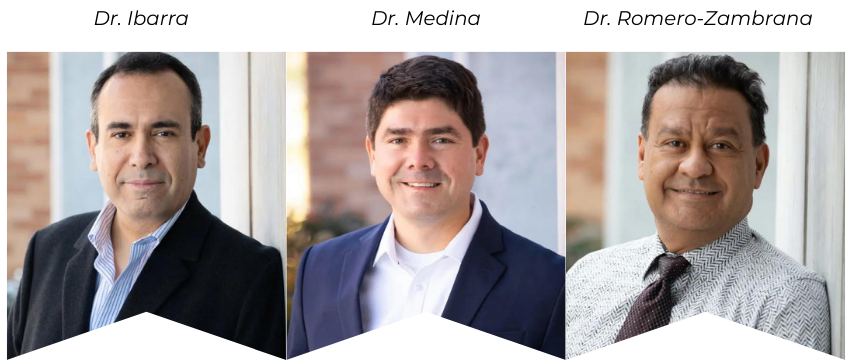National Hispanic Heritage Month, recognized from September 15 through October 15, celebrates the histories, cultures and contributions of American citizens whose ancestors came from Spain, Mexico, the Caribbean and Central and South America.
The Department of Civil and Environmental Engineering (CvEEN) is proud of its diverse and inclusive environment, fostered in part by our Hispanic community. Have you had the privilege of crossing paths or learning from our remarkable Hispanic faculty?
Let us introduce you to some of the brilliant minds shaping the future of engineering education and research in our department:
Dr. Luis Ibarra joined us from the Southwest Research Institute, where he used computer simulations and experiments to study how engineered barriers for radioactive waste react under pressure. Beyond the lab, Dr. Ibarra’s teaching passions encompass steel design, advanced topics, and the fascinating—and extremely important—world of structural loads and analysis.
Dr. Juan Medina is a dynamic research associate professor at CvEEN. Dr. Medina’s realm revolves around nurturing our graduate students in the bustling hub of our transportation lab. Additionally, his leadership on the Crash Data Initiative team is helping make Utah roads safer. He’s not just an educator, but a mentor who urges CvEEN students to carve their unique paths, emphasizing the importance of consistency and the development of essential computer programming skills to fuel their dreams.
Dr. Pedro Romero-Zambrana has an impressive 23-year tenure at the U. Dr. Romero’s teaching canvas spans construction materials, pavement design, pavement maintenance, sustainability, geotechnical studies, and transportation. Dr. Romero’s wisdom extends beyond the classroom, as he is constantly advocating for the delicate balance between academia and life itself.
As National Hispanic Heritage Month unfolds, we take a moment to honor and appreciate the diverse qualities, knowledge, and experiences that our Hispanic faculty bring to us. Their stories, experiences, and expertise remind us of the importance of embracing diversity and the unique perspectives it brings to the academic landscape.

